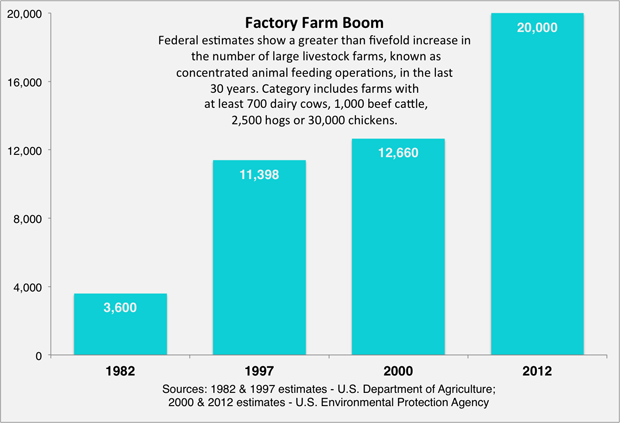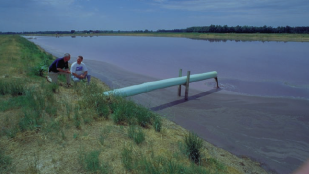Are conservation dollars polluting our water?
by Alyssa Charney
[dropcap]M[/dropcap]any conservation programs in the Farm Bill aim to help producers protect water quality from impairment from agricultural inputs. However, since 2002, funding from the Environmental Quality Incentives Program (EQIP) has been flowing to concentrated animal feeding operations (CAFOs), which are contaminating, rather than protecting, critical water resources. The 2014 Farm Bill failed to reform EQIP’s funding of these operations.
EQIP is a working lands conservation program that was established in the 1996 Farm Bill to allow agricultural and livestock operators to enroll in 5 to 10 year contracts to manage natural resource concerns. EQIP provides financial and technical assistance to producers to address natural resource concerns and deliver environmental benefits. Common practices include planting cover crops to prevent erosion or installing fencings for grazing rotations.
Despite EQIP’s conservation objectives, nearly 40 percent of the program’s funds currently go to CAFOs for waste storage facilities and irrigation equipment installation. And yet even with EQIP funding, CAFOs do not effectively manage the large amount of waste they produce.
Animal manure and urine from CAFOs are funneled into and stored in massive waste lagoons, which often overflow, leak, or break and send dangerous contaminants into water supplies. These lagoons are frequently located within floodplains on aquifers, directly contaminating the drinking water supply. Additionally, liquid manure stored in the lagoons is sprayed onto cropland or pastures through large sprinkler irrigation systems that over apply waste to levels that exceed what is needed to maintain soil fertility. Liquid waste from the sprayfields runs off into streams, lakes, rivers, and estuaries.



